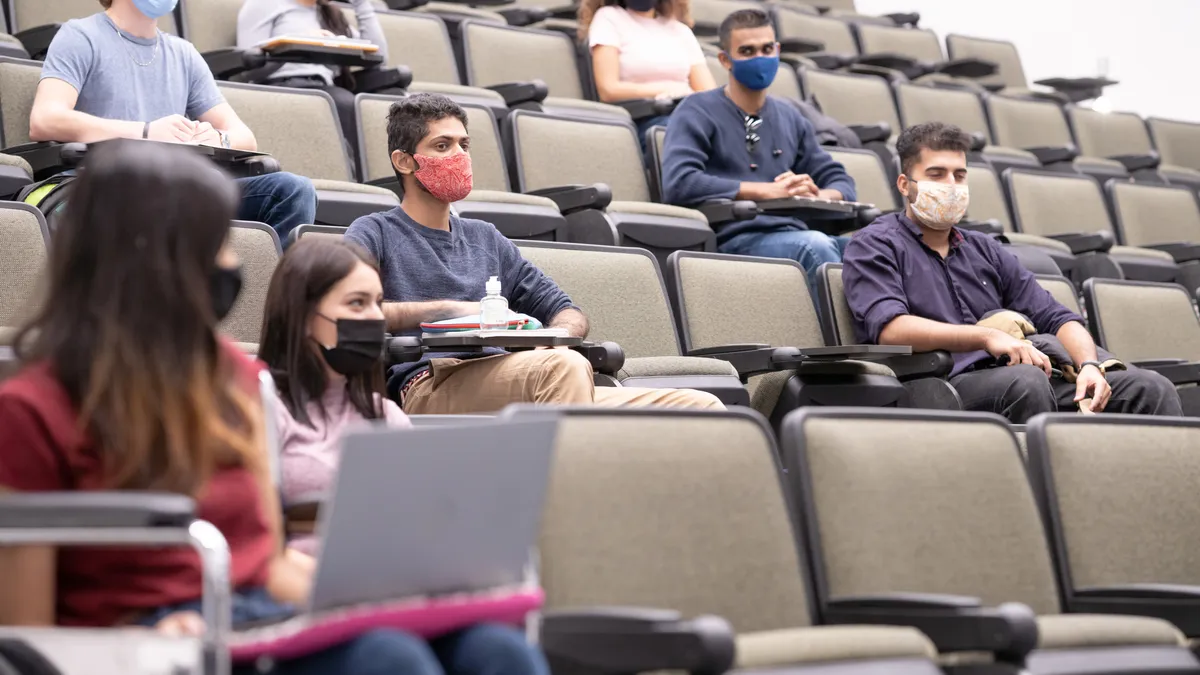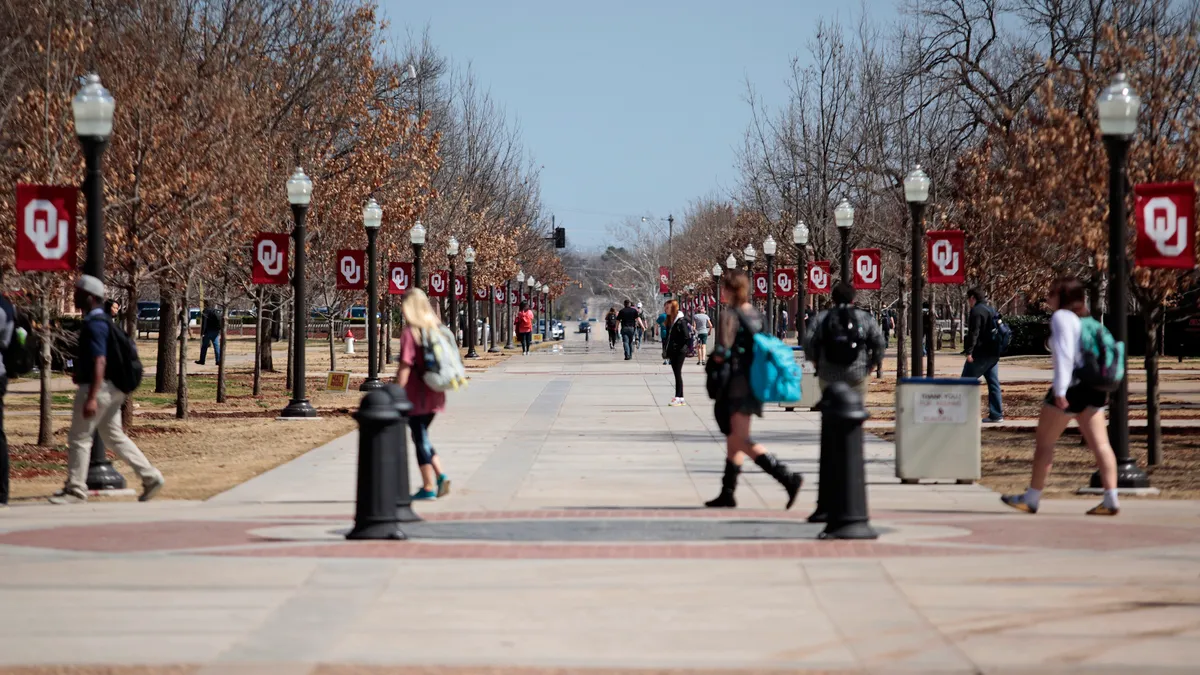Dive Brief:
- A combination of COVID-19 vaccination and other risk mitigation efforts can be highly effective at limiting disease spread at large universities, reducing classroom transmission risk to negligible levels, according to a new peer-reviewed article.
- Researchers from Boston University studied their own institution, which had nine possible cases of coronavirus transmission in classrooms between Sept. 1 and Dec. 1, 2021, despite a return to full in-person instruction. No cases were confirmed to be the result of in-class transmission.
- That fall, the university required students and employees to be vaccinated and wear face coverings, but it did not enforce social distancing. More than 140,000 in-person class meetings took place during that semester. Class sizes ranged from 2 students to more than 400, with an average of 31.
Dive Insight:
In fall 2021, the highly contagious delta variant was the most dominant strain of COVID-19, causing young people in particular to get sick more than the strain that initially arrived in the U.S. Many colleges started the academic year requiring individuals to be vaccinated and masked on campus, though some struggled with implementing those rules.
Against that backdrop, researchers set out to address how risky in-person instruction could be. The journal JAMA Network Open published their findings this month.
Academic work has shown vaccines and masking have varying success at limiting in-class transmission, the researchers wrote. Transmission in K-12 classrooms has been found to be limited, but those settings aren't comparable to university-sized lectures.
By examining Boston University, researchers scrutinized an institution with about 33,000 graduate and undergraduate students. The university had inspected its buildings and upgraded filtration systems to increase fresh airflow. Classrooms that weren't mechanically ventilated were outfitted with commercial-grade filters and their windows were opened when weather allowed.
Faculty could remove their masks when teaching if they were at least 6 feet away from students and submitted to frequent COVID-19 testing.
The university also conducted surveillance testing, taking nasal swabs from students once a week. Testing increased when outbreaks were detected. Those in isolation or quarantine had their access to buildings limited. The university also performed contact tracing for those who came down with COVID-19.
Boston University required students, faculty and staff to be vaccinated by the beginning of September 2021. Although the university allowed for religious and medical exemptions, the vast majority on campus complied, with 98.5% of faculty, 93.5% of staff, and and 98.7% of students getting vaccinated.
The report defined potential instances of in-class transmission as two or more infected people who shared a class but did not identify as close contacts outside of the classroom. It looked at coronavirus gene sequences to determine that nine cases of transmission potentially took place in the classroom over the course of three months.
Boston University administered over 600,000 coronavirus tests over the fall semester. Just 896 came back positive.
Most positive cases, 850, were found through weekly surveillance testing. On a rolling average, the campus saw between four and 27 cases daily.
"Understanding the risk of classroom transmission to assess against the benefits of in-person learning is important for university leadership decision-making," researchers wrote. "In this university setting that had mask mandates in the classroom and a vaccine mandate for the university community, our data showed that in-person learning was not contributing to the overall spread of SARS-CoV-2 in the campus community."
Most cases were likely the result of transmission from living arrangements, socialization or "extended contact-time events," researchers wrote.
They cautioned the findings may not translate to other coronavirus variants.










